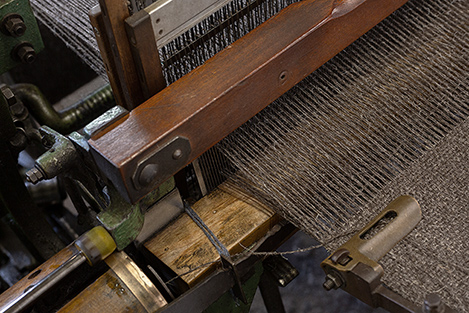Ulster in Herdwick tweed in light sheep
Prices exclude VAT, shipping is free, and orders leave the workshop within three working days.
Shop
£930.00 — ex VAT
Long, double-breasted coat, made in London, with heavy (28oz) tweed woven in Scotland — in a mill in an old boat-shed on the Morayshire coastline, no less, operated every step of the way singlehandedly with weaving contraptions of Victorian heritage — using the natural and undyed wool of Herdwick sheep from the Lake District, and horn buttons from the Midlands.
Waiting
Sold out almost if not entirely, this, by the looks of it. However, it might very well come back again some day — albeit likely in different cloth, or with a tweak or two, here and there. To be notified as soon as the time comes around, kindly please send word to .
Sizing
The Ulster fits true to size, so the mannequin — so perfect a 40 he has it branded on his chest — wears a size M. There is a degree of tailored shape in the body, so for a more relaxed fit to accommodate chunky layers, go up one size.
| XS | S | M | L | XL | |
|---|---|---|---|---|---|
| To fit chest | 36 | 38 | 40 | 42 | 44 |
| Pit-to-pit | 20 | 21 | 22 | 23 | 24 |
| Sweep | 21½ | 22½ | 23½ | 24½ | 25½ |
| Back length | 42 | 42¼ | 42½ | 42¾ | 43 |
| Sleeve from centre-back | 33½ | 34 | 34½ | 35 | 35½ |
The method of sleeve construction, with the sleeve cut as one continuous panel from neck to cuff, means the shoulders accommodate and drape smoothly over human contours of every shape and size — rendering a shoulder measurement both impossible and irrelevant.

As worn
Makers of
So they say
I've just received the Ulster, and it's truly unlike anything else in my wardrobe. The lapels are quite expressive, with a smooth roll as if having canvas within them. A few years ago, I visited the north-west [of England] and touched some sheeps with rough grey-streaked coats and white heads. Touching this coat brings me back to that good time. That being said, it is quite heavy, so I intend to reserve it for occasional snowy days, making it even more special.
[The Ulster] has arrived and I’m blown away, as always!
































